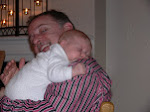Friday: A good day, at least in this apartment.
We both feel good, The Girlfriend better than she has in three weeks. (It’s Day 19 of her illness.) We’re hoping we can set her health clock at Day 1. (We’ve done this before only to see her backslide.)
The Girlfriend has been working to turn a poetry book she authored into a podcast. She didn’t write the poems, mind you. An academic who teaches about film and digital media, she in 2017 created a website documenting her responses to the Trump Administration’s first 100 days, in the form of a digital media primer. The goal: to counter the administration’s lies, bolster digital media literacy. A problem: given the internet’s corrosive capitalist infrastructure, the medium is untrustworthy; documenting digital falsehoods in a digital format risks contributing to rather than countering the problem.
She then created a series of poetry workshops, connecting with poets in their communities to co-lead small groups in which participants discuss ideas about “fake news,” then write poems in response. The book is a collection of workshop poems written by scores of diverse authors, interspersed with The Girlfriend’s essays about fake news and the project. When CoronaWorld delayed the book’s publication one of her students, now a video editor, suggested publishing some of the ideas and poems in the form of a podcast.
I’ve been editing the scripts; yesterday The Girlfriend recorded a few. Today we meet with the podcast team, including a musician who’ll create songs and sounds as a score. The meeting goes well. We’re not sure how these will sound, even whether the poems and essays will work in podcast form. But working on a creative project is energizing.
The Girlfriend’s real estate drama, which on Thursday provided bad news, takes a positive turn: bidders on her Southern California house are willing to wait until May 1 to tour the property, willing to keep their bids (above the asking price) in place until they can inspect. She signs an offer sheet. Lots of hurdles remain, but for now the sale’s on track — no small feat in CoronaWorld.
The mail brings glad tidings. A New Jersey friend, met when our daughters were grammar school classmates, unseen in a couple of years since her family decamped to the western suburbs, has read of our household’s mask shortage. She sends The Girlfriend and me two handsome, hand-sewn cloth versions, complete with sturdy drawstrings. They’re comfortable, fun, and, when I venture outside, make me feel not just prepared but vaguely bad-ass.
I use my smartphone to about 6 percent of its capacity: texts; camera; occasional links to a website; phone calls to a shrinking number of people, all older than I; maybe three or four apps. Lately, so rarely on the road, I use it even less. But a thought occurred on a recent walk: I can ask it to take notes, fleeting observations that strike me on my peregrinations. Forthwith:
— “Fort Greene Park is a place of almost urban density.” Even in this most crowded of American cities, in CoronaWorld we’re becoming used to empty streets, vacant spaces, silent playgrounds. This tidy park, Brooklyn’s first, with roots in the Revolutionary War and a design by Frederick Law Olmsted, is one of the few places that reminds me I live in a borough of 2.5 million people: dog walkers, baby strollers, seniors taking their constitutionals, exercisers of all sorts: its 30 acres are packed. That said, signs at all entrances remind us to keep distant.
— “Motorcycle/dog/car alarm.” As I walk along the park’s border an unmufflered motorcycle idles at a traffic light, then accelerates in a way my feet can feel, causing a mid-sized dog to launch a frenzy of barks at the same moment a car alarm emits a volley of beeps, chirps, whoops. My god, what a cacophony! my brain thinks, just before it occurs that none of this would have even registered BCW (Before CoronaWorld), which thought occurs the instant the siren is hushed, the dog quieted, the motorcycle engine dopplers away, and the city’s weird CoronaHush re-descends.
—“I fear the Hasidim.” Walking east on Willoughby Avenue, as soon as I cross Classon Avenue I see men wearing long black coats, wide-brimmed black hats, some with sidelocks, all bearded. I feel my body tense. Four Brooklyn neighborhoods with large percentages of Hasidic and other orthodox Jews — Borough Park, Midwood, Crown Heights, and Williamsburg — have especially high rates of residents testing positive for Covid-19. Why? The communities lack access to outside information; routinely interact with each other in crowded spaces (ritual prayers, communal schools, large families); share generational trauma leading to distrust of external power. This past weekend police broke up funerals in Williamsburg and Borough Park where hundreds of mourners violated social distancing rules. BCW, I liked walking through orthodox sections of Williamsburg, where it feels more like the 19th than the 21st century. Now? I breathe easier when I turn south on Nostrand, walk deeper into Bed-Stuy.
I come home, where the beef stew has been simmering for an hour. The Girlfriend opens a bottle of red; we toast our health, her tentative housing success, the close of a decent day, all things considered. At least in CoronaWorld.
(New York state numbers as of Friday: 170,512 diagnosed with Covid-19, up 6.6 percent; 7,844 dead, up 11 percent. Overall U.S. deaths: 18,544, up 12 percent.)


No comments:
Post a Comment